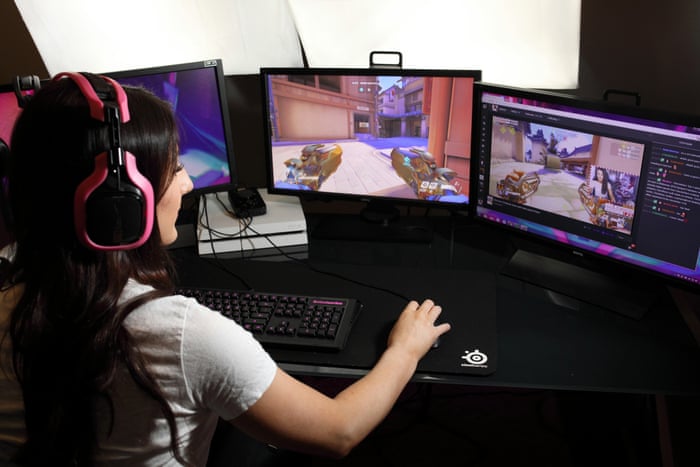▶ BCM332 Global Media Interventions
Chelsea Sandy is one of the top Call of Duty players in Australia. She has competed in many kind of gaming events professionally like EB Expo, Gamescom and the Call of Duty World Championships (Streamerpedia, 2018). In 2015, she decided to quit her full time job as a pharmacy technician to pursue a full time job as a video game streamer and follow her dreams in playing video games for a living. Chelsea is one of the growing number of Australian women who make a living from twitch.tv (a popular streaming site). She goes by the username xMinks on all her social media as well as her main ‘gamer’ tag, and every night at around 10pm she streams to her 330,000 followers – chatting with them while playing her favourite game(s).

Despite already being a professional at what she is doing, she still receives abuse and harassment. This is because the gaming industry mainly caters to the men or the ‘boys’ rather than it being a “girl thing,” so whenever any woman enters the scene of gaming — instantly they get judged and attacked right away just from being the gender that they are.
Like what I mentioned in my previous case study, appearance is the biggest aspect when it comes to women who play video games. Chelsea falls a victim to this abuse, she mentioned in an interview that unlike women, men’s physical appearance does not matter if their gameplay is amazing (Convery, 2017). That being said, if you were to change this scenario and turn it into a woman being good at playing video games and has amazing gameplay; her appearance will be the number one thing that — unfortunately to say — men will critique first, and despite having good skills in playing video games, men will still find a way to belittle women that are just enjoying what they are doing.

Although there is still a positive future ahead in the female gaming community. After becoming a full time streamer/gamer, Chelsea says that certain things have improved over the years of her being in the industry — putting aside the negative comments. According to Bullen (2015), this is due to the increased spotlight of women in the gaming community — more and more “girl gamers” are surfacing on streaming sites like YouTube and Twitch, producing content and being active just like the men in the community. Women are playing video games just like how men do, some are just as professional and/or skillful and some are just as competitive just like how men are.
If women in the gaming industry were to keep up their pace and stay active and loyal to their followers and subscribers, I can guarantee that one day when you decide to open up YouTube or Twitch to watch your favourite video game being streamed — the top video or livestream available to watch may or may not be a woman instead of a man. I’m not trying to put down the men in the gaming community but if ever this situation were to happen – being a gamer myself and a girl — I’d be more than content.
References:
- Admin. (2016, June 16). MINKS INTERVIEW (Chelsea Sandy). Retrieved June 11, 2020, from https://www.impulsegamer.com/minks-interview-chelsea-sandy/
- Bullen, J. (2015, July 22). Bad shooters, sore losers: Men take aim at top female gamer. Retrieved June 11, 2020, from https://www.smh.com.au/technology/bad-shooters-sore-losers-men-take-aim-at-top-female-gamer-20150717-giezl1.html
- Convery, S. (2017, January 03). The women who make a living gaming on Twitch. Retrieved June 11, 2020, from https://www.theguardian.com/technology/2017/jan/03/women-make-living-gaming-twitch
- SCUFGaming. (n.d.). SCUF Affiliate of the Week: Chelsea. Retrieved June 11, 2020, from https://scufgaming.com/int/gaming/scuf-affiliate-week-chelsea-minks-sandy
- Streamerpedia. (2018, October 12). XMinks. Retrieved June 11, 2020, from https://streamers.gamepedia.com/XMinks









